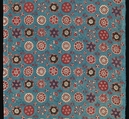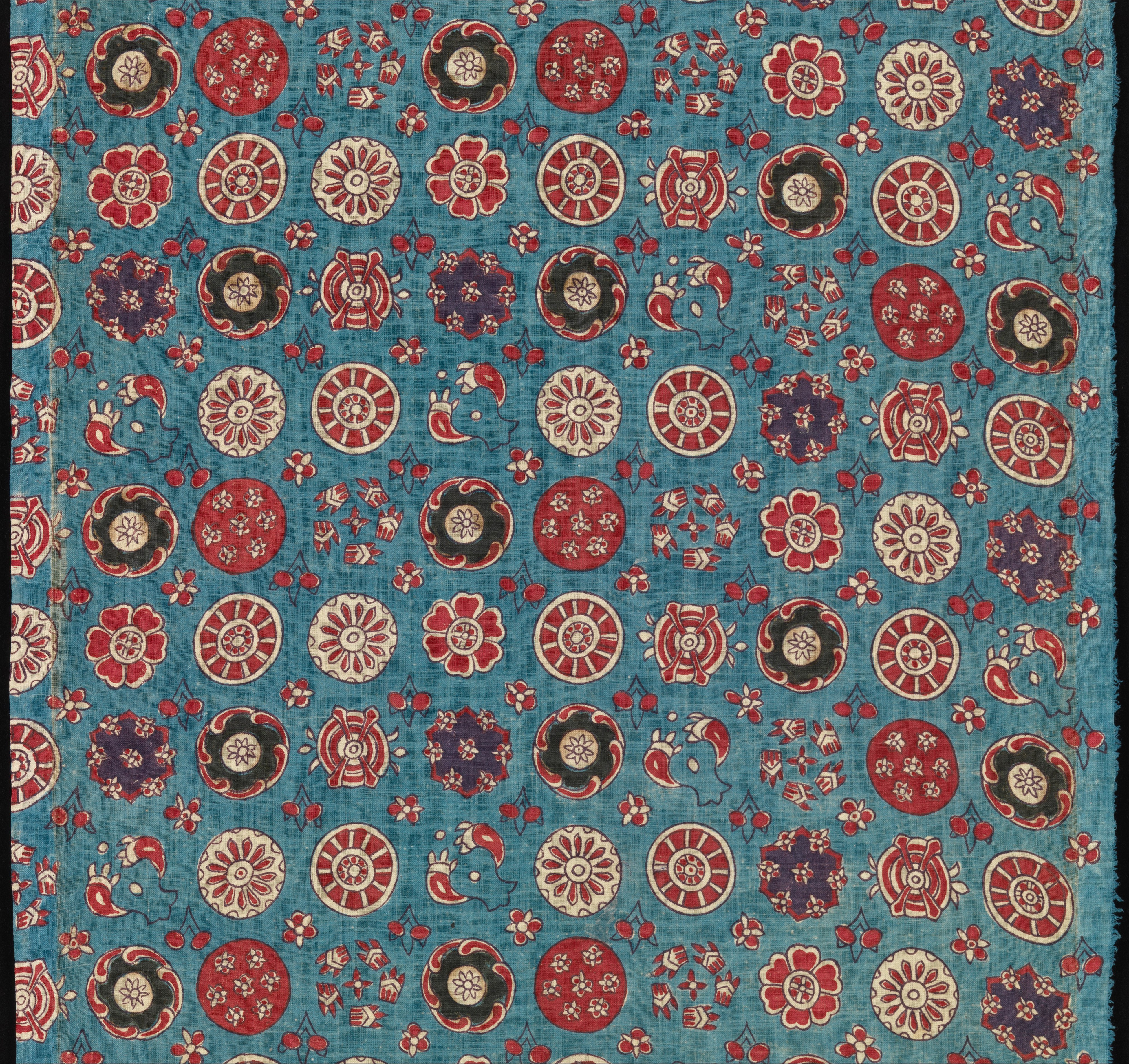Sarasa with Small Rosettes
India (Coromandel Coast), for the Japanese market
Not on view
The exceptional length of this cloth—more than seven feet—suggests its possible use as part of a waistband (obi). Indian sarasa was particularly popular in the Edo period (1615–1868) for obi and robe (kosode) linings. Although the fabric was made in India, the repeating pattern of regularly spaced rosettes and roundels was based on Japanese sources. The motifs evoke Japanese Buddhist iconography—the lotus and the wheel—as well as the traditional chrysanthemum. This type of design is present in late eighteenth-century Japanese sarasa manuals published in Edo and Kyoto. These manuals, with color directives that encouraged Japanese textile printers to copy the Indian designs, confirm that sarasa were widely circulated even before such publications appeared.
cat. no. 34
Due to rights restrictions, this image cannot be enlarged, viewed at full screen, or downloaded.
This artwork is meant to be viewed from right to left. Scroll left to view more.




